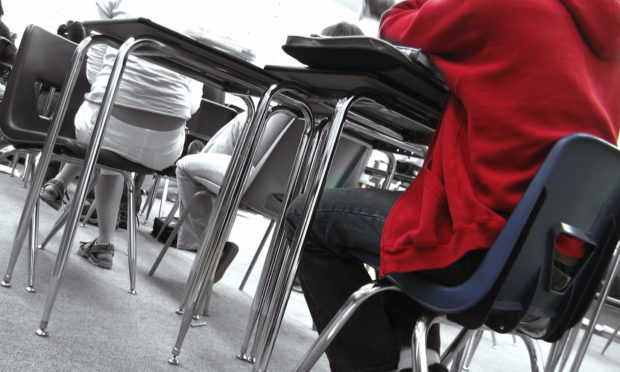Sir, – I wonder if your readers are aware, and are as concerned as I am, to discover that rates relief is about to be removed from independent schools in Scotland?
The Non Domestic Rates (Scotland) Bill is due for its final debate in the Scottish Parliament on February 4.
One of the clauses of the Bill will remove rates relief from all independent schools in Scotland, with the exception of “special schools.” That provision relates to disabled children and those with special needs, and “specialist music schools”.
Whatever could be the rationale of something like this?
Why is the Scottish Government targeting one small group of charitable enterprises, when the remainder will still enjoy relief?
The smaller specialist independent schools will doubtlessly be the worst hit and some will inevitably close, leading to students having to enter the state sector, which is already oversubscribed, especially in areas such as Perthshire.
Why should faith schools (eg those with a Christian ethos at their operational core) have what is effectively essential funding removed when “specialist music schools” retain theirs?
Is there a hidden motive in such a pointed move?
Our own grandchildren attend a Christian school, and benefit from the ethos, background and level of education in line with national standards that it provides.
Are we to see this provision removed if the school is unable to find the huge sum needed to replace the 80% rates relief currently enjoyed?
Where else could they get this?
Tim Michel.
Abernethy,
Perthshire.
Exemption for indy schools
Sir, – Our grandchildren attend a small, local Christian school in Balmedie and I am concerned as to the Scottish Government’s Bill to remove rates relief from independent schools such as ours.
The school is a faith-based school, drawing students from a wide range of families at varying income levels.
Budgets are well managed and fee reduction support is provided for those who need it.
There is a very happy environment throughout the whole school.
Why does the Scottish Government need to target such small minority schools?
A simple provision could be made to provide exemption from the removal of rates relief.
Committee members and ministers – please go ahead and make it.
Graham Whitbourn.
Balmedie,
Aberdeenshire.
Motorhomes are not the problem
Sir, – I read with concern the story about human faeces being discovered in car parks in Fife (Bid to get tough on wild camping at beauty spots, Courier, January 21) and helpfully illustrated with a photograph containing four motorhomes.
The photograph also showed in excess of 20 private cars.
Being a motorhome user can I reassure your readers that all of the motorhomes in the photograph will be equipped with their own private, built-in toilet.
Without wishing to put anyone off their breakfast, can I also point out that none of the private cars are equipped with their own private toilets.
I will leave readers to draw their own conclusions.
However it is clear that Scottish tourism and the resulting spending is being boosted by the popularity of motorhoming. I welcome the support of East Neuk and Landward Liberal Democrat Councillor Bill Porteous in looking to provide bespoke facilities for motorhoming tourists.
This is something that is commonly provided on the continent and seems to work well any time I have visited and used what the French call Aires.
Donald Macdonald.
Campaign for Real Aires,
1 Clair Road,
Bishopbriggs.
Fife’s ‘opaque’ planning system
Sir, – I understand from Anstruther Community Council that, without consultation, Fife Council have changed the way in which they publish information online for representations on planning applications from January 6 resulting in the public now being unable to view comments submitted regarding a planning application until after the consultation period has expired.
This represents a grave backwards step in the planning process, making it even more opaque than it is now.
It is already difficult for people to find out what is planned in their area unless they happen to live within the absurdly short distance of 20 metres, or in a conservation area, where at least notices are posted on the street.
Now it seems those objecting – or even supporting – an application will not be able to see the views of others.
This is a problem as some may raise issues that others were not previously aware of, but are then worried by.
It is also useful for community councils to see if there are certain issues that the majority are concerned about.
It is important that the number of comments are also visible so that the public and community councils can see the weight of feeling before it’s all over.
This is a way to make it more difficult to object, reduce the number of objections and shut down this democratic process, reducing transparency.
The reason given for this change is data protection.
However, this does not make sense as comments are to be published at the end of the consultation period anyway.
This means there is no data protection issue. If it is a question of comments needing to be checked before being published, then they should be checked earlier rather than later, during the consultation period, and published.
There is no good reason why this cannot be done. I know a number of community councils have objected to these changes and I am surprised they were brought in with no consultation.
I hope other members of the public will object to this change and that Fife Council will review this very bad decision.
Dr Margaret Hellicar.
2 St Ayles Crescent,
Anstruther.
Ban the heading of footballs
Sir, – I don’t often agree with what is going in the America of Donald Trump but the USA has made a really ethical move by removing heading from youth football since 2015.
There is some speculation that the SFA, which can be a slowcoach at times, may finally takes steps to ban under-12s from heading footballs.
This ban should be extended to adult amateurs and professionals.
This may not go down too well with some football bosses who are rightfully proud of their own expertise but seem to take it upon themselves to make judgments on medical matters they are not in a position to understand.
Statistics have shown the heading factor to be a serious risk.
Research carried out by Glasgow University revealed that professional footballers are three-and-a-half times more likely to die from various forms of brain damage and disease than those of the same advanced age in the general population.
Is it too much to ask why goalkeepers in old age have a low incidence of brain damage in comparison to their former team mates?
Walter Brander.
Kinloch,
Dunkeld.










